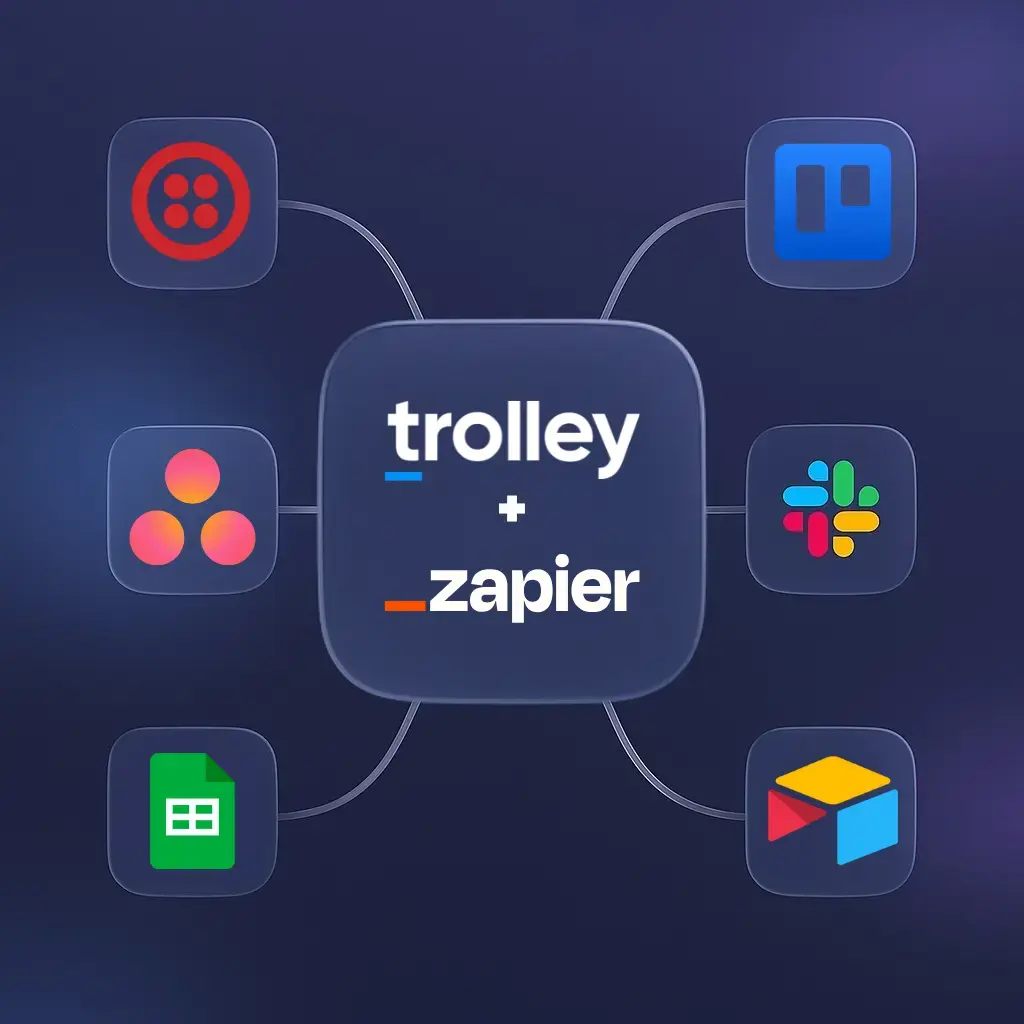A common scenario today: Your freelance marketing platform just received a signup request from a brilliant developer in Poland, a top-notch designer in Brazil, and a marketing wizard in Singapore. But figuring out how to pay them across borders feels like more effort than it’s worth. If you’ve ever spent hours wrestling with international wire transfers, drowning in tax forms, or explaining to contractors why their payment is delayed (again), you’re likely a bit hesitant.
It’d be easier to just send them a paper cheque in good old USD, right?
The world of work has gone global, but many companies still rely on payment methods built for a different era.
Here’s the good news: paying international contractors doesn’t have to be complicated or expensive. Modern payout solutions have transformed what used to be a monthly headache into a smooth, automated process.
In this article, we will show you exactly how to pay overseas contractors.
What we cover
Cross-border payout challenges
The way we work has changed forever.
Today, over 76 million Americans freelance, and an estimated 435 million people around the world participate in online gig work—a figure representing up to about 12.5% of the global labor force and highlighting the rapid expansion of this sector.
Remote work isn’t just a trend—it’s the new normal. Companies now tap into global talent pools, hiring the best people regardless of their time zone.
And while it’s a great thing in theory, things can get messy—especially for CFOs, controllers, and AP managers. Finding talent has never been easier, but paying that talent across borders is fraught with risk. The process that clears in Canada might get blocked in Thailand, and one mistake can mean regulatory fines, payment delays, or frustrated talent walking away.
Here are the biggest pain points that keep CFOs and AP teams up at night.
Challenge 1: Multiple currencies
Pop quiz! What’s the exchange rate between USD and EUR right now?
Got you! It’s a trick question. By the time you finish reading this sentence, it’s already changed.
As an international business, you may need to pay international contractors in euros, pounds, pesos, and rupees—all this month. Each currency comes with its own exchange rate that changes by the minute. You check the rate on Monday, but by the time you process payments on Friday, you’ve lost hundreds of dollars to currency fluctuations.
Currency conversion isn’t just about math. It’s about timing, fees, and hidden costs. Banks often mark up exchange rates by 2-5%, burying the real cost in the fine print. That markup might seem small, but when you’re paying hundreds or thousands of contractors monthly, it adds up fast.
Then there’s the planning challenge. How do you budget when exchange rates swing wildly? One month, paying your UK contractor costs $2,000. Next month, the same invoice will cost $2,150. These fluctuations make financial forecasting feel like guesswork.
Challenge 2: Expensive wire fees
Traditional wire transfers are the dinosaurs of the payment world: slow, expensive, and frustrating for everyone involved. Here’s what a typical international wire looks like:
Your bank charges you $30–50 to send the wire. But your bank usually can’t send money directly to the recipient’s bank overseas. Instead, the payment hops through one or more intermediary banks, each one taking another $15–30 as the wire moves along the chain. Finally, the recipient’s bank deducts another $10–25 before releasing the funds. By the time your contractor gets paid, as much as $100 has vanished in fees. For a $500 payment, that’s a 20% loss to fees alone.
One thing transfers have going for them is their speed. They often arrive within 24 hours, but that’s assuming everything goes perfectly. One typo in the SWIFT code will delay the payment, and missing information will cause your payment to bounce back.
Want to dig deeper into cutting costs? Get our take on reducing cross-border payment fees.
Challenge 3: Tax forms (W-8BEN/1042-S)
Nothing says “welcome to the team” like a stack of tax forms, right?
The IRS wants their paperwork. Skip the W-8BEN form for international contractors, and you’re legally required to withhold 30% of every payment. Try explaining that to someone expecting their full fee.
But one form would be too simple. Different countries need different documents and different tax treaties create exceptions. Forms expire every three years. Miss a deadline, and penalties start stacking up faster than unread emails.
Without a system to track and update documentation, you’re always one expired form away from compliance issues.
Challenge 4: Vendor onboarding delays
Every new contractor means another person onboard.
At first, collecting a recipient’s name, address, and payment details sounds simple—until you realize banking and tax information vary dramatically by country. In Europe, payees often need an IBAN; in the US, it’s a routing number; in Japan, it might be a branch code. Many countries also require a SWIFT/BIC on top of that.
And beyond banking, you’ll also need the right Tax Identification Number (TIN)—or even a Foreign TIN (FTIN)—to stay compliant with local and international reporting rules. Miss one piece, and the payment can be delayed, rejected, or flagged for compliance review.
Collecting accurate banking and tax details is only half the battle. Next comes verification: confirming that the contractor is who they say they are, that their bank account is valid, and that they don’t appear on sanctions or watch lists. This due diligence protects your business but can stretch into days or weeks without the right systems in place.
Challenge 5: Error-prone manual payments
Manual payment processing is where good intentions go to die. Every manual step introduces potential errors, and international payments have many steps.
Consider a typical manual process: Someone exports contractor data from your project management tool. They manually enter payment amounts into a spreadsheet. They copy banking information from emails or documents. They input everything into your banking platform. Each step is a chance for errors that range from annoying to catastrophic.
Common mistakes include transposed numbers in account details (payment fails), wrong currency selection (contractor receives far less than expected), and duplicate payments (awkward conversations and clawback attempts).
Manual processes also don’t scale. Paying five contractors manually might take an hour. Paying fifty takes ten hours. Paying five hundred? You need a full-time team just for payment processing.
Traditional methods vs. modern solutions
By now, you might be genuinely terrified of international contractor payments and quite ready to throw in the towel. Rest assured, there is a light at the end of the tunnel. Now that we know the challenges that traditional methods face, we can better see how the modern way of doing things addresses those issues.
The old way
For decades, businesses relied on a handful of methods to pay international contractors. Each has its place, but all come with significant limitations.
- Bank wires remain the most common traditional method. They’re universally accepted and handle large amounts well. Banks process wires through the SWIFT network, a messaging system that connects institutions. While reliable, they can be expensive ($30-100 total fees), and require precise information. One wrong digit sends your payment into limbo.
- PayPal revolutionized online payments but wasn’t designed for the scale of business-to-contractor payments. It’s fast and familiar, which contractors appreciate. However, PayPal’s fees for international business transactions can reach 5% plus currency conversion markups. Withdrawal limitations and account freezes create additional headaches. Many contractors also report difficulty accessing PayPal in their countries or transferring funds to local banks.
- Digital wallets like Payoneer or Wise offer a middle ground. They’re cheaper than wires and more business-friendly than PayPal. Contractors receive payments in a digital wallet and can withdraw them to local banks or spend them via debit cards. The downside? Not all contractors want another financial account to manage. Plus, fees still add up with currency conversions and withdrawals.
- Paper checks still exist, believe it or not. Some businesses mail international checks, which can take weeks to arrive and weeks more to clear. Besides being laughably slow, checks often incur hefty processing fees at the recipient’s bank. Many international banks simply refuse to process foreign checks.
Each traditional method forces compromise. You sacrifice either speed, cost, convenience, or reliability. These compromises might work for occasional payments. But as your international contractor base grows, traditional methods become unsustainable.
For a deeper comparison of these methods, read our breakdown of ACH vs. wire vs. PayPal.
The new and improved payment solution
Modern payout platforms flipped the script. Instead of choosing between the lesser of two evils, you get everything: speed, savings, and simplicity.
- Local payment rails changed everything. Why route every payment through expensive international networks? Modern platforms use the same systems locals use. Your payment converts the currency once, then zooms through domestic channels. Result? Same-day delivery at a fraction of the cost.
- Payment APIs bring automation to international payouts. Connect your existing systems, accounting software, project management tools, or custom platforms to payment services. Approved invoices trigger automatic payments. Contractor information syncs across platforms. What once required hours of manual work happens in seconds with no human intervention.
- Mass payout platforms solve the scale problem. Paying 10 contractors? Takes 5 minutes. Paying 1,000? Still takes 5 minutes. Upload a CSV file or let the API work its magic. Built-in compliance, automatic tax forms, and contractor portals handle the heavy lifting.
- Embedded compliance tools address the regulatory challenge. Modern platforms build compliance right into the payment flow. They collect and store tax forms, perform required identity verification, and maintain audit trails. Some even calculate and handle tax withholding based on treaty rates and local regulations.
One way to look at it is that traditional methods treat international payments as special cases requiring extra work. Modern solutions treat them as routine transactions that should be as easy as domestic payments.
The difference is dramatic. Companies we work with report:
- 70% less time processing payments
- 50% lower costs than traditional wires
- 90% fewer payment failures
Best practices for paying international contractors
Success with international contractor payments requires more than just choosing the right platform. You need solid processes that ensure compliance, efficiency, and positive contractor relationships. Here are some field-tested practices that we’ve found work for many companies:
Verify contractor status vs. employees
Misclassifying employees as contractors or vice versa triggers serious consequences. For instance, if you didn’t withhold when you should’ve, you might owe back taxes or face legal issues. Different countries define contractors differently, making verification essential but complex.
As such, the first step should be to make that distinction.
- True contractors control how, when, and where they work. They use their own equipment, work for multiple clients, and operate as independent businesses.
- Employees follow set schedules, use company resources, and work exclusively or primarily for you.
The US uses multiple factors to determine whether a worker is a contractor or a traditional employee, including behavioral control, financial control, and relationship type. Check out this IRS page for more information.
A good way to go about checking this is to create a contractor verification checklist.
- Document how each contractor meets independence criteria.
- Note your agreement with said contractor in writing so that it’s easy to demonstrate intent if ever audited.
- Maintain clear records of communications, invoices, and deliverables to support your classification decisions.
Collecting payment and tax info
Efficient information collection starts before the first invoice. In fact, it begins as soon as you onboard your contractor.
Tip from Trolley: Waiting to collect this info until payment time creates delays and frustrates contractors.
For US companies, W-8BEN collection is non-negotiable for foreign contractors. Make the form easy to complete by providing clear instructions, offering form field explanations, and using digital collection tools that validate entries. Explain why you need the form.
Trust us; contractors will complete it faster if they understand it prevents 30% withholding!
You should also set up systematic tracking. Remember that tax forms expire, typically after three years for W-8BEN. Build reminders into your system 90 days before that expiration date. Send contractors updated forms with pre-filled information where legally allowed. Make renewal as painless as possible for them, and you’ll see more collaboration.
Finally, it’s crucial to store documentation securely but accessibly. Your finance team needs quick access during payments and audits. Use systems that encrypt sensitive data while maintaining usability.
Choosing the right transfer method
One size does not fit every situation in international payments. The perfect transfer method balances cost, speed, reliability, and contractor preference.
Country & currency
Start by understanding the available options in each country.
Bank transfers work everywhere but vary in speed and cost. Some countries have instant, cheap local transfers. Others rely on slower systems. Digital wallets like PayPal or Payoneer have country and currency-specific availability and limitations.
Size
Consider payment amounts when choosing your method. Large payments often justify wire transfer fees for security and reliability. Smaller, frequent payments benefit from lower-cost options.
Preference
Always ask contractors for their preference. A contractor might choose a slightly more expensive method if it means faster access to funds or easier local withdrawal.
Tip from Trolley: Build flexibility into your process. Your primary method might fail or face temporary restrictions. Having backup payment methods prevents delays and maintains contractor trust. Test backup methods occasionally to ensure they still work when needed.
Handling currency exchange
Smart currency management saves thousands of dollars annually. The key? Strategy beats reaction every time.
First, you must see through the smoke and mirrors. Banks and payment services make money in two ways: explicit fees and exchange rate markups. A “no fee” transfer with a 5% markup may end up costing more than a $30 fee with mid-market rates. Always calculate the total cost, not just visible fees.
Next, for regular payments, consider dollar-cost averaging. Convert fixed amounts weekly regardless of rates. You’ll win some and lose some, but you’ll also sleep better. That’s because you reduce the risk of major swings while still remaining manageable.
Finally, be transparent with contractors about currency handling. Specify whether you pay in their local currency or yours. If contractors bear conversion costs, they often increase rates to compensate for it. Paying in local currency might cost slightly more, but it attracts better talent and simplifies negotiations.
Timing/frequency of payouts
Nothing builds trust like predictable payments. Nothing destroys it like late or missing payments.
Establish clear payment schedules from day one. That might entail paying upon invoice receipt, net 15, or monthly. Whatever it may be, communicate the terms clearly and stick to them. Include payment terms in contracts and onboarding materials. No contractor should wonder when or where their payment will arrive.
Contractors don’t necessarily have the same cash cushion as large businesses. They need their cash flow. Faster payment terms attract better talent and result in loyalty. Automate scheduling where possible. Modern payout platforms support recurring payments, milestone-based triggers, and automated approval workflows.
Keeping records for compliance
Good records are like insurance, boring until you desperately need them. When compensating contractors, you’ll want to document every payment with:
- Contractor name
- Tax ID
- Payment amount
- Currency
- Exchange rate applied
- Payment method
- Fees
- Purpose of payment
Modern global payment platforms capture this automatically, but you can occasionally verify that everything is complete.
Of course, you’ll also want to keep the onboarding documentation you acquired. These include signed contracts, tax documentation, and identity verification records.
Follow your country’s retention requirements, typically 3-7 years for tax purposes. Use secure, encrypted storage for sensitive information. Test your backup system regularly as archived data only helps if you can access it.
Evaluating global payout solutions (What to look for)
As you can see, upgrading to a more modern global payout solution is a no-brainer. It transforms international payments from a challenge into a competitive advantage. But with dozens of options available, how do you evaluate them? Which one will live up to its promises?
That’s exactly why we created our Payout Platform Buyer’s Guide—a practical framework for comparing providers, packed with real-world criteria from finance and AP leaders. Use it alongside the considerations below to make sure you choose a platform that won’t just work today, but scale with you tomorrow.
You can also explore our blog on how to choose the right global payouts platform for additional tips and evaluation strategies.
We recommend focusing on these critical features that separate good solutions from great ones.
Country and currency coverage
Coverage determines who you can pay and how easily you can grow. Look beyond simple country counts to understand true accessibility.
- Start with your current needs: List every country where you have contractors today, and add the countries where you plan to hire. A platform might advertise coverage in 100+ countries, but if it doesn’t have strong rails in the three you need most, it won’t work for you.
- Examine coverage depth, not just breadth: Some platforms technically serve a country but only offer expensive wire transfers. Others provide local payment methods that arrive faster and cheaper. True global payout coverage means offering the payment methods locals actually use.
- Check currency support carefully: Can the platform pay in local currencies, or does it force USD conversions? Local currency payment usually costs less and simplifies contractor accounting. Multi-currency accounts let you hold balances and time conversions strategically.
Payment method flexibility
Flexibility means meeting contractors where they are instead of forcing them into one method. The best platforms offer multiple options per country. Each serves different needs and preferences.
Essential international contractor payment methods include
- Local bank transfers (ACH, SEPA, etc.)
- International wires for large or urgent payments
- Digital wallets for the tech-oriented
- Prepaid debit cards for unbanked recipients
- Paper cheques, especially when contracts demand them
Evaluate method availability by country. A platform might offer ten payment methods globally but only one or two in specific countries. Also, ask about backup methods. What happens if the primary method fails?
A note about recipient experience: You might also want to think about the recipient experience. How do contractors receive and access funds? The smoothest platforms make receiving payment effortless. It also comes with additional features. For example, check for payment tracking and confirmation.
Contractors shouldn’t need special accounts or complex procedures. The easier you make it for contractors, the better talent you’ll attract and retain.
Tax form management
Handling tax paperwork is one of the most tedious parts of paying international contractors—but it doesn’t have to be.
The best platforms make tax form collection digital and intelligent. They automatically collect the correct form based on contractor location, validate that all fields are complete and accurate, and then store those forms securely for easy retrieval during audits.
Because forms like the W-8BEN expire every three years, renewal reminders and pre-filled updates can save hours of manual follow-up. Digital tax workflows not only prevent compliance issues but also eliminate the delays and frustration contractors face when paperwork isn’t in order.
For a deeper dive, check out our article on international contractor tax compliance.
Compliance & identity verification
Tax forms are only one piece of the compliance puzzle. A modern payout solution should also have KYC (Know Your Customer) capabilities built in. That means verifying contractor identities, validating banking details, checking sanctions and watch lists, and keeping an audit trail of the process.
This type of due diligence protects your business from fraud, regulatory penalties, and reputational damage. And since regulations change constantly, strong platforms monitor new requirements and notify you when updates are needed.
Done right, compliance becomes a seamless part of the payment flow, thorough but not disruptive.
Integration with AP tools or ERPs
Since the entire purpose of switching to a more capable platform is automation, look for the right integrations. You want your new tools to play well with your current ones.
Evaluate native integrations first. Pre-built connections to popular accounting software (QuickBooks, Xero, NetSuite) are fairly common. However, you want to verify the depth of that integration. Does it sync basic payment data or complete contractor records, including tax information?
If your workflow is complex enough to warrant custom integrations, you’ll need to turn to leveraging an API/SDK. Well-documented APIs let you build exactly what you need. Look for:
- RESTful APIs with clear documentation
- Webhook support for real-time updates
- Sandbox environments for testing
- Reasonable rate limits
Consider the total integration ecosystem. Beyond accounting, you might need connections to:
- Project management tools
- Time tracking systems
- Expense management platforms
Cost transparency
As a business, few things matter more than your bottom line. Naturally, you’ll want to opt for a payouts platform that keeps costs low. And that starts with transparency. If you don’t know what you’ll be paying half the time, it’s hard to determine whether you’re actually saving money. Understand the full fee structure, including:
- Per-payment transaction fees
- Monthly platform fees
- Currency conversion margins
- Recipient fees (if any)
- Set-up or integration costs
Then, calculate costs for typical payment scenarios. What does it cost to pay $1,000 to Germany? How about $5,000 to India? Include all fees and currency conversion costs. Build a comparison spreadsheet using your actual payment patterns.
Support and recipient experience
Last but not least, you want a platform that will be there for you every step of the way. Let’s face it: banks aren’t exactly known for their stellar customer service.
SaaS and Fintech companies, on the other hand, are. It’s one way they differentiate themselves in a crowded market.
You want a platform that has tech support standing by, ready to help you if something goes wrong. Good platforms respond within hours, not days. And those responses fix your issues in as few interactions as possible. You can test this with a simple pre-sales question. How quickly and thoroughly do they respond?
Also, look for multichannel support options. Email works for non-urgent issues, but you need phone or chat support for international contractor payment problems.
Recipient usability
Then, assess the contractor portal experience. Can recipients track payments, download statements, update banking information, and access tax documents? Self-service options reduce support requests. They also improve contractor satisfaction. The portal should work on mobile devices as well! Many international contractors rely primarily on phones.
When growing pains became growing gains: The Draft story
John Thomas at Draft watched his writer network explode from a handful to hundreds. That’s 4,000 pieces of content every month. Sixty million words a year. Success, right?
Not quite. Here is the story of how Trolley helped Draft transform their payment operations.
Every payday, the admin team was drowning in spreadsheets. The hours tick by as they manually process payments. Worse? They were bleeding money—up to $10,000 monthly—through simple human errors. Writers invoice for work they didn’t complete. Numbers get fat-fingered. Mistakes multiply.
This isn’t just about lost time or money. It’s about trust. When creators wait for payments or receive the wrong amounts, relationships crack.
Draft didn’t accept this chaos as “the cost of doing business.” They searched for a better way. After testing multiple solutions, Stripe Connect lacked global reach, and PayPal’s API felt like opening Pandora’s box, they found their answer: Trolley Pay
The transformation was immediate. What once consumed an entire day now takes minutes. Those $10,000 monthly losses? Gone. Reduced to zero through automated accuracy. Writers receive payments in two days, with fees dropping from $40 to just $1 per transaction.
Think about what this means. Draft’s team reclaimed 52 full workdays per year. That’s two months of productivity returned. They now save $60,000-$120,000 annually in payment errors alone. Most importantly, they built a foundation that scales.
The takeaway: Growth shouldn’t hurt. When manual processes start breaking, that’s not a sign to slow down—it’s a signal to level up. Look at your own operations. Where are you losing hours to tasks that technology could handle? Where are human errors costing you money and trust?
Start small. Pick one painful process. Research solutions that fit your actual needs, not just the popular options. Test thoroughly. Then, watch what happens when you stop fighting fires and start building systems.
If you’re starting to feel the same pressure, check out our article on how to know when it’s time to invest in a more powerful global payout platform.
Start your own transformation today with Trolley
If Draft’s story sounds eerily similar to your own or has inspired you to take action, we invite you to stop delaying your digital transformation.
Paying international contractors doesn’t have to be slow, expensive, or error-prone. The challenges are real, but so are the solutions.
The key takeaways to remember:
- Traditional methods force compromises. Wires are expensive. Digital wallets have limitations. Manual processes don’t scale. Accept these limitations only if you must.
- Modern solutions solve multiple problems simultaneously. The right platform handles currency conversion, compliance, automation, and contractor experience in one system.
- Best practices matter as much as technology. Clear classification, timely payments, transparent communication, and solid documentation protect your business and build contractor loyalty.
- Evaluation requires looking beyond features. Consider total costs, integration capabilities, compliance tools, and support quality. The cheapest option rarely provides the best value.
The companies winning the talent war make working with them easy. They pay quickly, transparently, and reliably. They remove friction from every interaction. They treat international contractors as valued partners, not administrative burdens.
👉 Ready to evaluate your options? Download our Global Payout Platform Buyer’s Guide for a clear, step-by-step framework to compare providers and choose the solution that will scale with your business.







